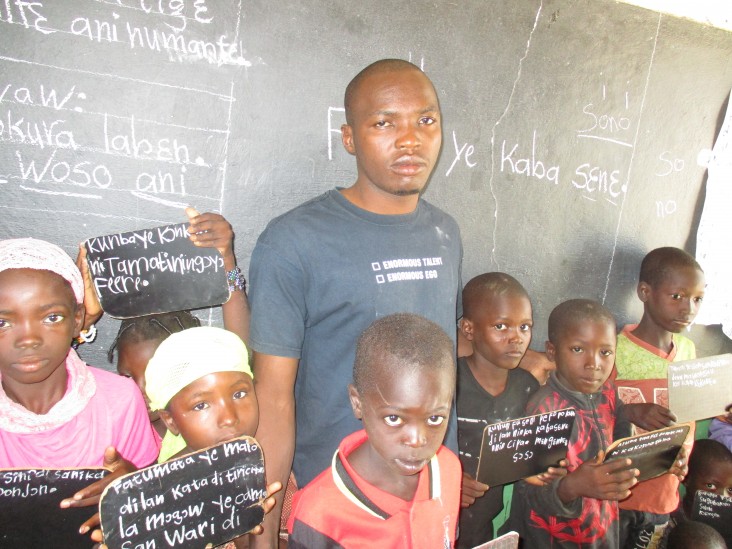Speeches Shim

With the Balanced Literacy approach that USAID/Mali SIRA implements, students, within a few weeks of the start of the school year, know all the letters of the alphabet and their sounds.
In Nianamalé village in Sikasso Region, south of Mali, Salif Koné had always taught in schools where French was the language of instruction. However, he would often have to speak Bamanankan—Mali’s national language—for his students to understand the content and fully participate in class. Despite having a diploma from the Teacher Training Institute, Koné struggled to teach reading and writing.
“I didn’t know letters had sounds to help students read better,” he says.
Koné wanted to change his teaching style. That change came when USAID-funded Mali Selective Integrated Reading Activity (USAID/Mali SIRA) began to improve the teaching and learning of reading and writing in grades 1 and 2 in Mali in 2017. Through its training activities on the balanced literacy approach to literacy instruction, pedagogical leadership, and teacher learning communities, USAID/Mali SIRA is significantly improving the quality of teaching and learning in Nianamalé and beyond.
Moussa Diakité, President of the School Management Committee, is delighted with the project’s achievement. “Since the project started in our school, students’ behavior has improved,” he says. “Children greet their parents in the morning, respect adults and help each other. This is because the students have been counseled by well-trained teachers. Moreover, the academic level of Grade 2 students, especially in reading, is much higher than those in Grade 6. Even more surprisingly, they easily understand everything they read. I have experienced this at home.”
“As a school director, I now understand that holding that position does not make me a king, and that I must conduct classroom observations of teachers and that teachers should come away from our feedback sessions satisfied, motivated and not humiliated”. Salif Koné, School director and teacher, Grade 2 Students–Nianamalé
Despite the lengthy teachers’ strike in Mali during the 2018-2019 school year, the results of the project’s efforts were clearly seen in Koné ’s class. Only four weeks in the school year, 7 out of 10 children were able to read a grade-appropriate text, while 72 percent of his students were at the conventional and transitional stages of spelling—indicating that the balanced literacy methodology, as well as Koné’s teaching, were helping students learn how to spell accurately.
Koné is not surprised by these brilliant results. He says that his students know the timetable by heart and always remind him when he pretends to forget what he should be covering. “Since my students are motivated and passionate, I make sure I also put into practice the tips the project has given to me during the various training sessions such as permanent reading and writing, literacy games and the use of the alphabet board.”
During his monitoring visits, Ténéman Samaké, Pedagogical Counselor of the District Education Office of Yanfolila, has been surprised by his discovery. “The first time I went to his school to observe him teaching, I met this very calm man and to be honest, I didn’t expect to see any wonders,” he says. “I was, however, quite amazed by him and his students. They all knew how to write their names and ages. It made me forget the challenges I faced in going to school.”
Koné is thrilled that his students’ performance in reading and writing exceeds that of older students at school. He would like to see the project extend its intervention through grade 6 by introducing French from grade 3 onwards.
Launched in 2016 for five years, the USAID/Mali SIRA improves the teaching-learning of reading and writing in Bamanankan of 1st and 2nd grade students in public and community schools in Koulikoro, Sikasso, Ségou and Bamako. The project reached 264,169 learners, trained 7,239 teachers and offered coaching to 3,986 school directors.

Comment
Make a general inquiry or suggest an improvement.